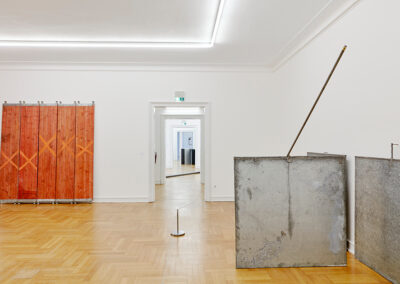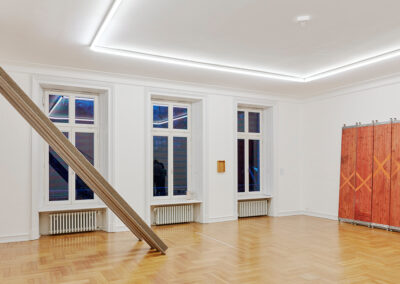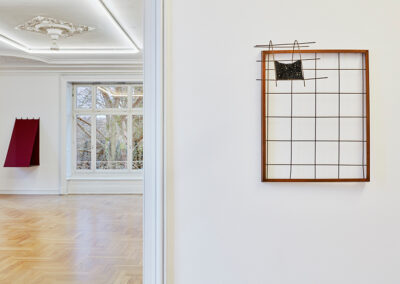“Calm Before the Storm - Postminimalist Art from the Rhineland” Museum Morsbroich, Leverkusen, 2015
The catalog, published in parallel with the exhibition of the same name at Museum Morsbroich in Leverkusen, examines the influence that minimal art has had on artists in the Rhineland since the late 1960s. For the first time in art history, European artists embraced a style that had been developed in the United States without continental models or influences. It was a heated debate that testified to respect and enthusiasm, but also to a self-confident reinterpretation and countering of American positions. Since 1965, the term Minimal Art has been used to describe an art movement that, especially in the field of sculpture, relies on an extremely reduced formal vocabulary. (Donald Judd), meaning that they do not refer to any models, ideologies, hierarchies, or specialized skills such as particular craftsmanship. Specific objects are simple, comprehensible, and mean nothing other than themselves. In 1969, the Kunsthalle Düsseldorf showed the exhibition Minimal Art, which had already been on display at the Gemeentemuseum in The Hague the previous year. At the Düsseldorf Art Academy in particular, it was Sigmar Polke who transferred Minimal Art to the medium of painting, choosing a series of Delft tiles as his central motif (Carl Andre in Delft, 1968). In Joseph Beuys' class in particular, minimalism encountered artists who had already been trained in Kazimir Malevich's stereometric painting: Imi Knoebel, Imi Giese, and Blinky Palermo. And Joseph Beuys himself, who had worked with simple, powerful forms and industrial products from an early stage, incorporated the minimalist style by charging its components with warmth, meaning, and materiality. In this way, a special Rhineland form of post-minimalism develops—empathetic, humorous, and fond of quotation—which will later play its own driving role in the formulation of postmodernism in the Rhineland and the USA. With works by Joseph Beuys, Isa Genzken, Ludger Gerdes, Imi Giese, Harald Klingelhöller, Imi Knoebel, Erinna König, Meuser, Reinhard Mucha, C.O. Paeffgen, Blinky Palermo, Sigmar Polke, Gerhard Richter, Reiner Ruthenbeck, Thomas Schütte, Yuji Takeoka, and Rosemarie Trockel.

Ausstellungsansicht Ruhe vor dem Sturm, photo Anita Kloten



